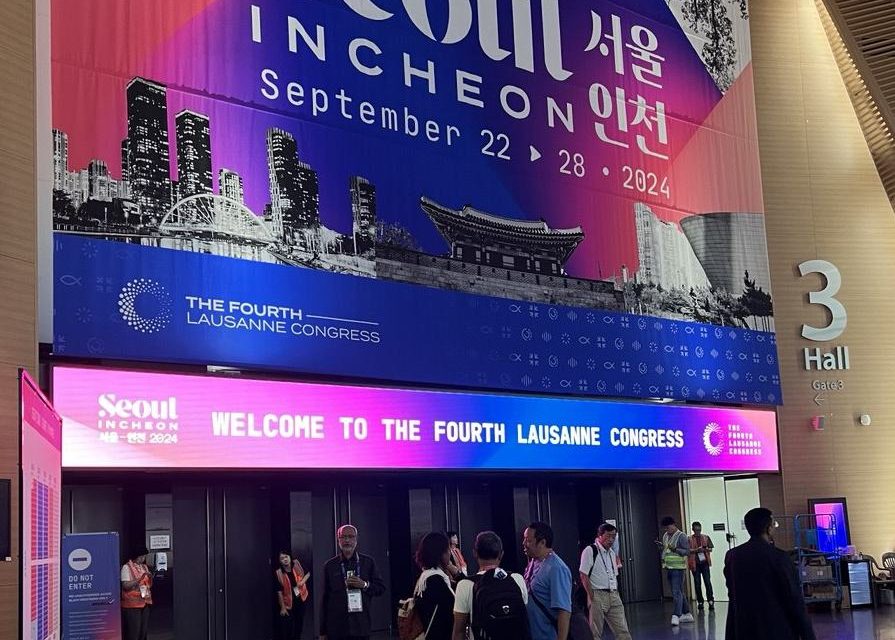Well, the 1000+ volunteers have packed up all the components of the Fourth Lausanne Congress on World Evangelization in Seoul/Incheon, South Korea, and all 5000+ delegates from 210 nations have headed back to their homes in the four corners of the earth. So as we look back, what can we glean? What can we learn from Lausanne? Check out the video and written reports by clicking the read more button to see this full post:
Lausanne’s own videos about the Congress:
First, get a feel for the backdrop for the event by watching this 30-minute intro to the State of the Great Commission. It’s filled with dozens (hundreds?) of charts and graphs. Truly worth the time to watch it, partly because it forms the basis for the entire program at Lausanne 4 in Seoul/Incheon. It features the lead editor for the study, Matthew Niermann – but can’t possibly feature all 150 contributors. (One of our Team Expansion team members was one of the contributors! She’s a missional information specialist, formerly with Finishing the Task. Her name is Lara and she’s the real deal. No wonder she was one of the 150.):
Day 1:
Day 2:
(Note: The Lausanne media team didn’t produce a Day 3 video.)
Day 4:
Day 5:
Day 6:
Day 7:
Next, watch our 3-minute intro to Lausanne:
Watch our 10-minute summary of the first half of the week:
Then watch our video, “What’s Not Being Talked about at Lausanne.”
[Note: To be fair — some of the items we mentioned that were seemingly not being addressed were indeed engaged in the final 24 hours of the conference. For example, the final 3 sessions focused on young leaders, reconciliation (which even included some mention of the Russia’s war on Ukraine and what it would take for there to be reconciliation: The answer? “justice.”), servanthood, and repentance. So… it almost seemed like they watched the above video and caught some of the very themes I was missing! haha So thankful for those who designed the main sessions. They hit sooooo many key themes that we needed to hear.]
Next, watch our video, “Collaborate to Close the Gap”
Throughout the entire experience, the Lausanne planners just nailed so many logistics. And even when they hadn’t thought of things before, it seemed like they made adjustments along the way. 48 hours later, everything would be smooth on each prior hiccup. They were masters of executing a congress like this – even with 5000 participants. Highly effective.
There were so many examples of God at work. For example, in the Unreached Peoples “gap” area (that I attended), one speaker gave the example that a French-speaking leader had entered the room wishing he could sit with a French-speaking table because he really wanted to reach out to Tunisia. There was a bit of wrangling to find a French-speaking table (because there were lots of tables and people in our track), but they finally found a spot for him… and it was indeed a French-speaking table. Several minutes in, one of the participants at the table revealed that he was indeed from Tunisia — the very place that the French-speaking man wanted to help. In all of the Lausanne Congress in Seoul/Incheon, there was one (1) representative from Tunisia. Somehow (by God’s grace?), the French-speaking man had been placed at the very table where that one Tunisian happened to be sitting.
It was a great Congress.
In my case, I went with an openness to develop a new project utilizing go-ers from a former missionary-receiving nation in one part of the world, hoping our agency could partner to send these go-ers to the other side of the planet to a very hostile and unfriendly, unreached place. Not only was I able to put together a plan and a strategy to do so, but I now have literally dozens of people to help me. In fact, I have an entire training center that has, as its reason for being, to help people do exactly what I had hoped.
After each of the past Lausannes, collaborative efforts like this rolled out for years afterward. One example: Organizers of the ETEN Bible translation network put together their initial plans at the Lausanne Congress in Capetown in 2010. Now, some 14 years later, they have a plan that should result in engaging every last language (that needs to be engaged in translation) by 2033. [Note that they won’t all be done in 2033, but they should all be started by that date – and the genesis for the idea was Lausanne 3 in Capetown. We might not fully appreciate all of the implications for Lausanne 4 until we look back at it in several years.
May God use this gathering to accelerate the growth of His Kingdom for His glory and to speed His coming at exactly the time of His choosing.













Recent Comments